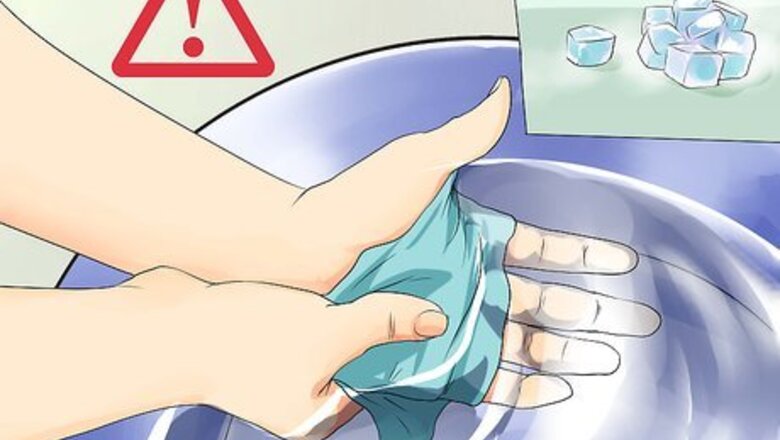
views
X
Research source
It can be used in a variety of ways including keeping food cold during a power outage or during shipping and for making movie special effects. Because dry ice is so cold, it cannot be handled safely without proper protection and knowledge of the chemical itself.
Handling Dry Ice Safely
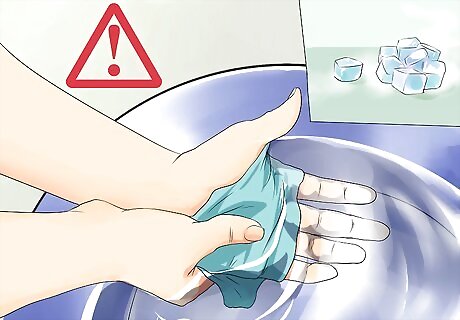
Know the dangers of handling dry ice. Handling dry ice is dangerous due to its extremely cold temperatures that can lead to frostbite and tissue injury. The carbon dioxide vapors in an unventilated area are also toxic. If prolonged contact with dry ice occurs, do not rub the affected area. Remove clothing that is not frozen to the skin and place the affected area in a warm water bath. Avoid direct dry heat.

Protect yourself by dressing in a long-sleeved shirt, long pants, and closed-toed shoes. Proper protection is essential while handling dry ice. The best protection is to cover all of the surfaces of your body that could be exposed. Gloves and goggles are extremely important to protect your hands and eyes from injury.
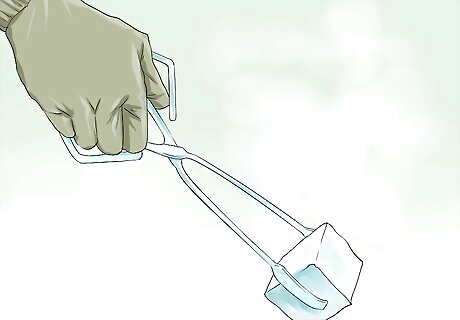
Pick up the dry ice with tongs. Never handle dry ice directly with your bare hands. If possible, use metal tongs when transferring chunks of dry ice to new locations. If you do not have tongs available, wear an oven mitt or towel while handling the dry ice. Metal tongs with serrated edges work best.
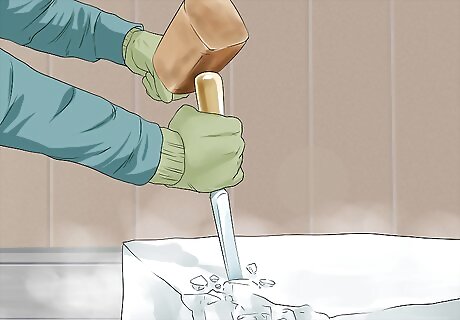
Use a chisel to break off smaller pieces from the block. If you purchased a block of dry ice and need smaller pieces, use caution while chiseling them off. Break off pieces of the ice by setting a chisel to the desired point, and tapping it lightly with a mallet. Always wear eye protection while chiseling to prevent chips from flying into your eyes.
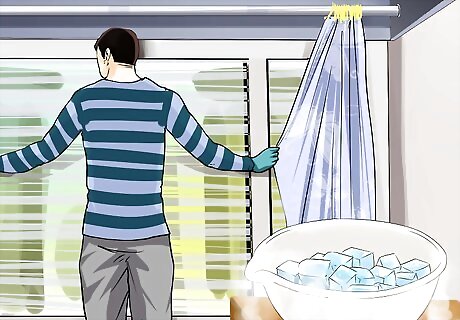
Use the dry ice in a well-ventilated area. Dry ice is frozen carbon dioxide. As it warms, it sublimates (turns directly from a solid to gas, skipping the liquid phase) into its gaseous form. Exposure to large amounts of gaseous carbon dioxide is hazardous to your health and can cause you to lose consciousness or suffocate. Working in a room with good ventilation or an open window can prevent a dangerous buildup of gas and keep you safe. Symptoms of excessive carbon dioxide inhalation include dizziness, headache, and increased heart rate.
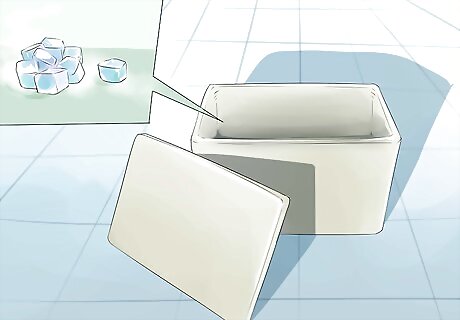
Store dry ice in an insulated container that is not airtight. Dry ice sublimates relatively quickly, but its shelf life can be extended by storing it an insulated container such as a Styrofoam cooler. Make sure the container is not airtight to prevent the buildup of carbon dioxide gas. Too much gas in an airtight container can lead to an explosion.
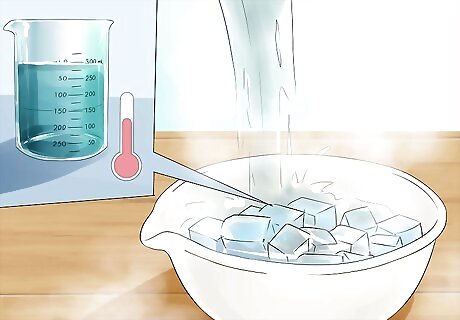
Melt the ice when you are finished with it by pouring warm water over it. The warmer the dry ice gets, the faster it sublimates. To dispose of it, you can either leave it open to the air in a warm area or pour warm water over it until it is gone. Do not leave children unattended around dry ice. Don't try to dump the dry ice down a sink drain or toilet or you could damage the pipes. Don't dispose of dry ice in the trash. Don't let the dry ice evaporate in a small area without proper ventilation. The build-up of carbon dioxide can lead to unconsciousness and even suffocation.
Using Dry Ice to Keep Food Cold
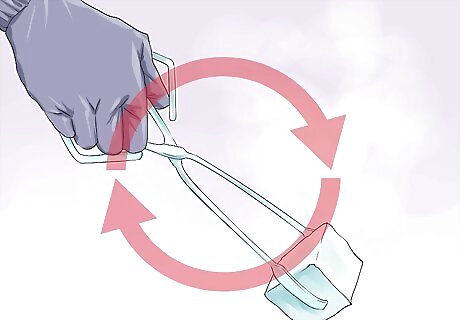
Wear protective gloves when handling dry ice. Dry ice is very cold and should never be handled directly. Protective, insulated or leather gloves should be worn while handling the ice. An oven mitt or towel is also sufficient to protect your skin. Prolonged direct contact to dry ice can freeze your skin cells and cause an injury similar to a burn. If possible, use tongs to transfer the dry ice to different locations.
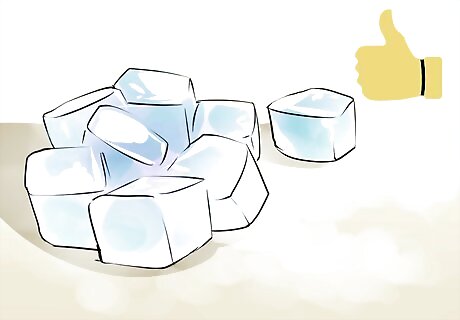
Use certified food-grade dry ice. Dry ice can be obtained in a pellet or block form. During production, the dry ice is in contact with many potential contaminants that can be hazardous to your health. For many applications, these contaminants are not hazardous as the items that are being kept cool will not be consumed. If you are using the dry ice to keep your food cold, make sure that you get food grade dry ice that is contaminant free. Food that comes in direct contact with the dry ice is perfectly safe and can be consumed without worry. As dry ice warms up, it turns directly in the gas carbon dioxide. Carbon dioxide is what gives the fizz to a soda and is perfectly safe to consume in these small amounts. Do not put dry ice directly into drinks or food that will be consumed as this can cause severe burns to the mouth and throat.
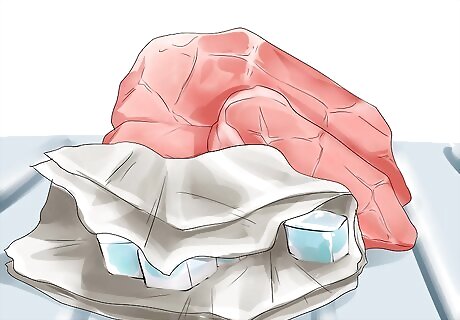
Put a piece of cardboard or newspaper between the dry ice and the food. Dry ice is much colder than the temperature of your freezer or refrigerator. If possible, avoid having the food in direct contact with the dry ice, particularly in the refrigerator. Wrapping the dry ice in newspaper also adds an extra layer of insulation that can make the block last longer. Dry ice will freeze any food it comes in direct contact with.
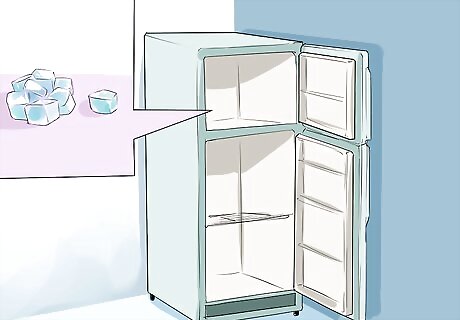
Know the proper placement of dry ice in a freezer or refrigerator. If you lose power and you don’t want to lose all of the food in your refrigerator, dry ice is the best way to keep your food from spoiling. It is particularly useful if you know you will not have power for a few days. The placement of the dry ice is important: in a freezer, the dry ice should be placed above the food. When using dry ice in the refrigerator, place the block at the bottom of the freezer. Do not put dry ice in a functioning freezer or refrigerator. Because the dry ice is much colder than the temperature of the freezer, the freezer will turn off. Avoid placing dry ice near plastic or glass containers as the dry ice can freeze the container and cause them to crack or break.
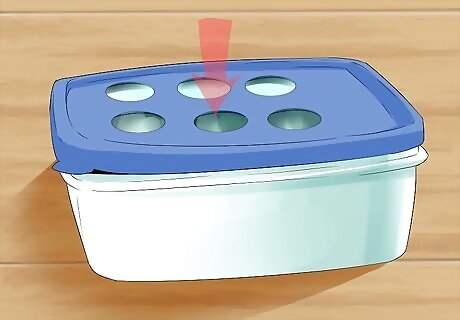
Use containers with loose lids that are not airtight. Frozen carbon dioxide sublimates into a gas, skipping the liquid phase. Dry ice must be contained in a cooler, fridge, or freezer that allows this gas to escape. Storing dry ice in an airtight container can lead to a hazardous buildup of gas and can be an explosion hazard.

















Comments
0 comment